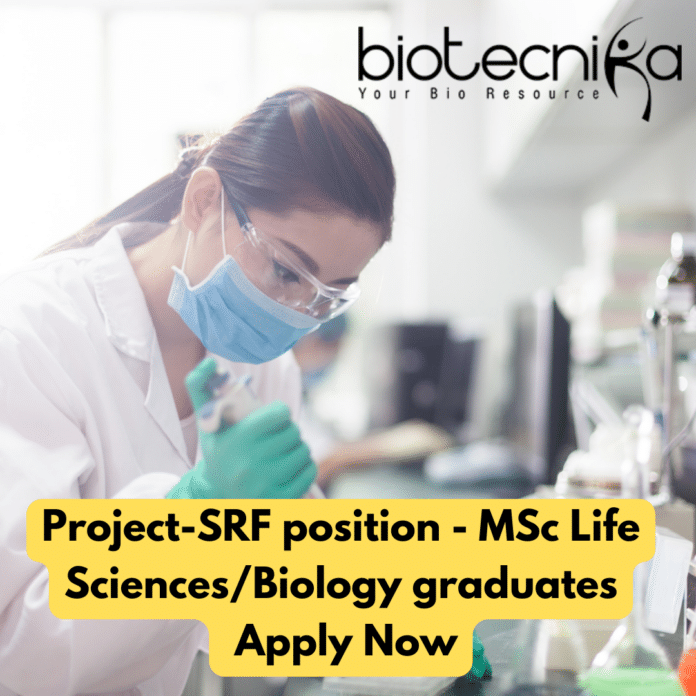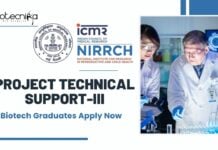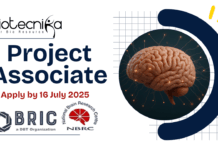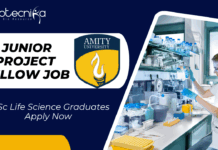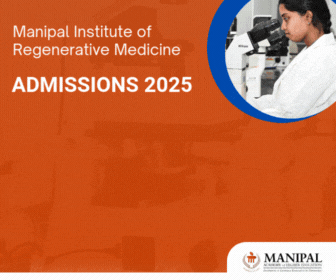Project-SRF position at Regional Center for Biotechnology – Applications are invited – MSc Life Sciences/Biology graduates – Apply below
Advt. No. 25/Project/2023/HR
Interview for Project-SRF position
Title of Project : Elucidating the Structural characteristics of pilus components from Enterococcus faecalis, an opportunistic pathogen of the Urinary tract.
Duration : Initially six months may be extended until the duration of the project based on evaluation.
Essential Qualifications : Post Graduate Degree in Life Sciences/Biology or associated field with any National Level Test and two years of research experience.
Desirable Qualifications : Research experience in structural biology including gene cloning, protein purification, crystallization, X-ray crystallography, structural bioinformatics, biophysical techniques, and cryo-electron microscopy. Good oral and written communication skills. A strong motivation for a career in research.
Principal Investigator : Dr. Vengadesan Krishnan, Professor
No. of Position : One
Emoluments : Rs. 35,000/- + 24% HRA per month as per guidelines.
Interested candidates should apply online by 25th September, 2023, 5:00 PM.
The shortlisted candidates will be informed by 29th September, 2023 via email to appear in the online interview to be held at 2:30 PM onwards on 5th October, 2023.
For any query, you may contact PI
by email : [email protected]Please upload copies of the following documents:
1) M.Sc. marksheet in Life Sciences/Biotechnology.
2) National Level JRF eligibility test certificate.
3) Peer-reviewed, published manuscript, if any.
CHECK OUT BIOTECNIKA FOR MORE UPDATES
Here are some potential interview questions and sample answers for the Project-SRF position:
- Can you explain your research experience in structural biology, including the techniques you have used?Sample Answer: In my previous research positions, I have extensively worked in the field of structural biology. I have experience in gene cloning, where I designed and cloned target genes for expression. I have also conducted protein purification using various chromatography techniques to obtain highly pure protein samples. Additionally, I have worked on crystallization trials to produce protein crystals suitable for X-ray crystallography. Moreover, I have used structural bioinformatics tools to analyze protein structures, predict binding sites, and perform structure-based functional annotations. Furthermore, I have utilized biophysical techniques like circular dichroism spectroscopy and isothermal titration calorimetry to characterize protein-ligand interactions. Lastly, I have been involved in cryo-electron microscopy experiments to visualize macromolecular complexes at high resolution.
- Could you discuss a specific research project or publication that highlights your expertise in structural biology?Sample Answer: Certainly. One of my notable research projects involved the structural elucidation of a key enzyme involved in antibiotic resistance in Gram-positive bacteria. We successfully cloned the gene, purified the protein, and obtained high-quality crystals suitable for X-ray crystallography. The resulting crystal structure revealed important insights into the enzyme’s mechanism of action and provided a foundation for potential drug design. This work was published in a peer-reviewed journal [mention the journal and publication details] and has been cited by other researchers in the field.
- How do you plan to contribute to this specific project on Enterococcus faecalis pilus components?Sample Answer: I believe my background and experience in structural biology align perfectly with the goals of this project. I am eager to contribute by employing my expertise in gene cloning, protein purification, and crystallization to isolate and characterize pilus components from Enterococcus faecalis. Additionally, I can utilize structural bioinformatics tools to predict the structural features of these components and potentially identify binding sites. Furthermore, I am proficient in biophysical techniques, which will be valuable for studying the interactions of pilus components with other molecules. I am excited to be a part of this research and help advance our understanding of this opportunistic pathogen.
- How do you stay updated with the latest developments and techniques in structural biology?Sample Answer: I am committed to staying current with the rapidly evolving field of structural biology. I regularly read scientific journals and attend conferences and seminars related to structural biology and related fields. I am an active member of online forums and professional networks where researchers share the latest discoveries and techniques. Additionally, I actively engage in hands-on training sessions and workshops to gain proficiency in new experimental methods and software tools. Continuous learning and staying informed about emerging trends are essential in the field of structural biology.
- Can you describe your experience with collaborative research and communication skills?Sample Answer: Collaboration is a vital aspect of scientific research. In my previous roles, I have had the opportunity to work with multidisciplinary teams, including biologists, chemists, and computational scientists. Effective communication is crucial in these collaborations, and I have honed my skills in both oral and written communication. I regularly presented my research findings at lab meetings and conferences and have published my work in peer-reviewed journals. I believe in clear and concise communication to facilitate productive teamwork and the dissemination of research findings.
All the best!
Editor’s Note: Project-SRF position at Regional Center for Biotechnology – Apply Online Please ensure you are subscribed to the Biotecnika Times Newsletter and our YouTube channel to be notified of the latest industry news. Follow us on social media like Twitter ,Telegram, Facebook and Instagram.


























